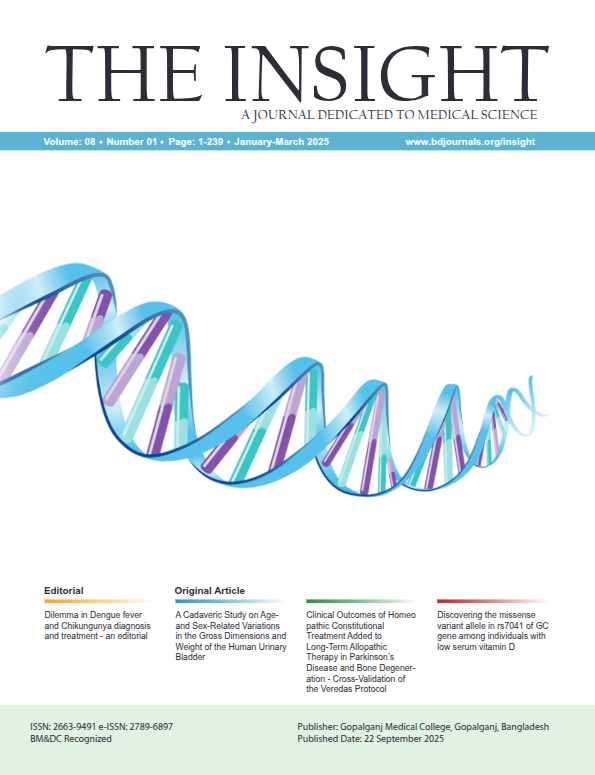Abstract
Background: Cardiac arrhythmias are common in patients with type 2 diabetes and may present with symptoms like palpitations, dizziness, or syncope. Holter monitoring is a useful tool for detecting arrhythmias in this high-risk population. Methods & Materials: This study employed a cross-sectional design and was conducted at BIRDEM General Hospital, located in Shahbagh, Dhaka. The research was carried out over six months from March 2013 to August 2013. Patients of 18 years of age and above, of either gender, referred for Holter monitoring with symptoms of palpitations, dizziness and syncope were evaluated for types of arrhythmia. Results: The mean age of patients was 58.80±10.98 years. Maximum number of patients with arrhythmia were found in the age group of 60-69 years. Male to female ratio was 1.7:1. There were significant correlation between control in FBG values and arrhythmia in the study subjects (p= <0.001). Statistically significant difference in mean ventricular and supraventricular beats (in 24 hours) was observed between controlled diabetes and those with uncontrolled diabetes (P-value was 0.016 and 0.01 respectively). The complaints for which patients were referred included dizziness in 34%, palpitations in 55% and syncope in 11%. Eighty-eight percent (approx.) patients with dizziness, 72.7% patients with palpitations and 47.4% of patients who presented with syncope had documented arrhythmias (p=0.01). Conclusion: Twenty four hour Holter monitoring is an important investigation for evaluation of patients with palpitation, dizziness and syncope. Arrhythmias were detected frequently in diabetic population in both symptomatic and asymptomatic patients.

This work is licensed under a Creative Commons Attribution 4.0 International License.
Copyright (c) 2025 The Insight





 PDF
PDF